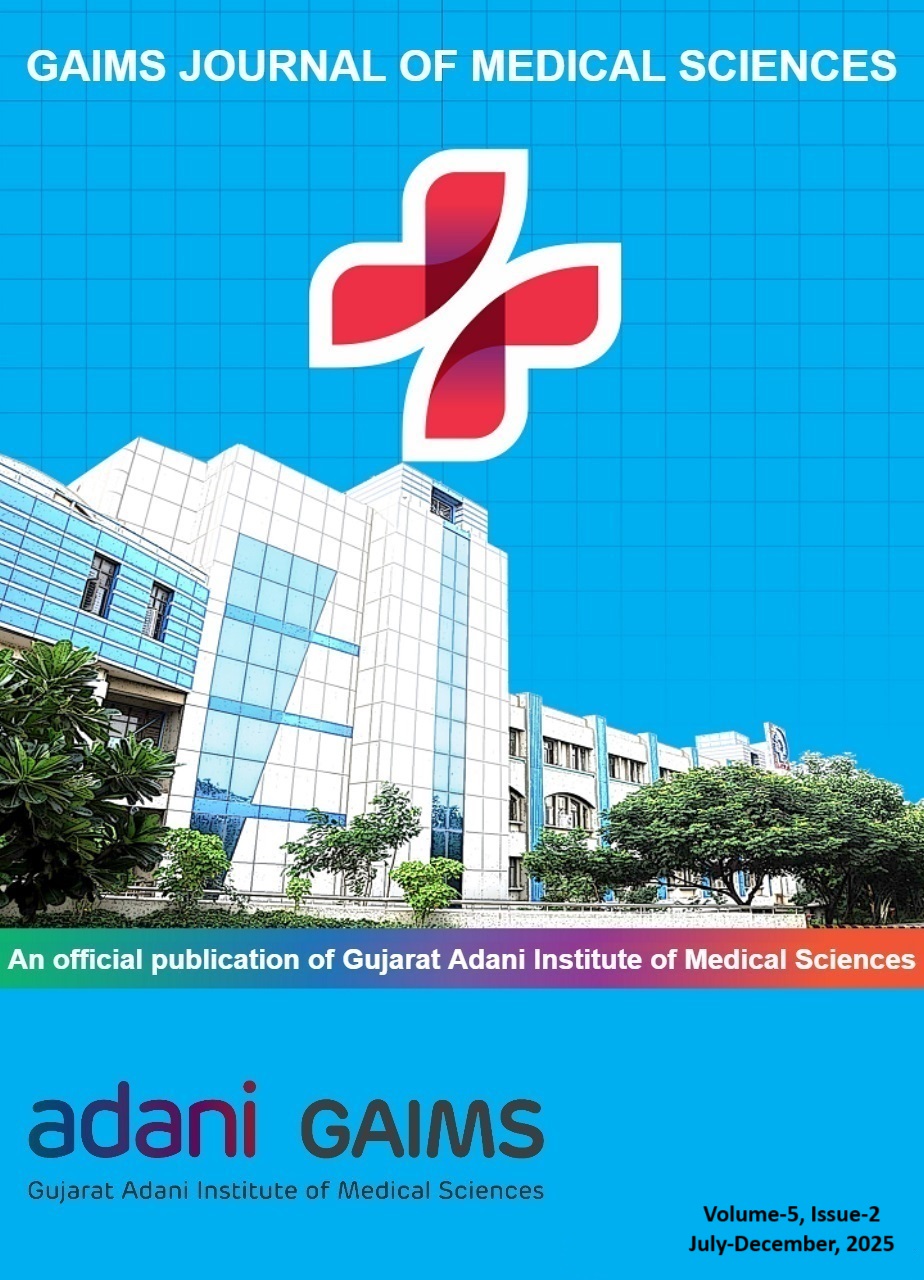Bacterial Isolates and Drug Susceptibility Pattern of Sterile Body Fluids from Tertiary Hospital in Saurashtra Region: A One-Year Retrospective Study
Keywords:
Body fluids, Kirby Bauer disc diffusion test, Antibiotic sensitivity patternAbstract
Background
Body fluids obtained from sterile body sites are often expected to be devoid of any pathogenic or commensal microorganisms. The cause of infected body fluids could be any pathological agents or skin contaminants that may be harbored in intensive care units. This study identifies commonly isolated bacteria from the body fluid samples along with their antibiotic sensitivity pattern.
Methods
All body fluid samples (except blood, and CSF) which were received in the Bacteriology section of the Department of Microbiology in our tertiary care center of Saurashtra region between June 2021 to June 2022 were included in the study. All microorganisms obtained from bacterial culture were subjected to identification by using conventional methods and standard biochemical tests were done to aid identification. Antibiotic sensitivity testing by Kirby Bauer disc diffusion test and the results were analyzed.
Results
Out of 250 samples of body fluids, 72 (28.80%) showed bacterial growth on culture. Male predominance among patients was seen. Patients falling between the age group of 41-50 show maximum positivity and the ratio of prevalence of infection in the young and old patients seems to be nearly similar (52% in patients less than 50 years of age and 48% in patients elder than 50 years) Escherichia-coli was the most commonly isolated bacteria (27.77%) which was followed by Pseudomonas (25 %) and Klebsiella pneumonia (22.2 %).
Conclusions
This study shows the spectrum of bacterial isolates observed from body fluid samples received in our laboratory and helps in the empirical treatment of patients based on antibiotic susceptibility patterns. It also highlights the importance of adhering to antibiotic sensitivity results in reducing the empirical broad-spectrum antibiotics abuse and infection control practices to prevent the spread of multidrug-resistant infection in the hospital environment.
Downloads
Published
Issue
Section
License
Copyright (c) 2025 Brihadishwaran Thiyagarajan, Krunal D Mehta, Hitesh J Assudani, Dhiviya Narbhavi T

This work is licensed under a Creative Commons Attribution-NonCommercial-ShareAlike 4.0 International License.








